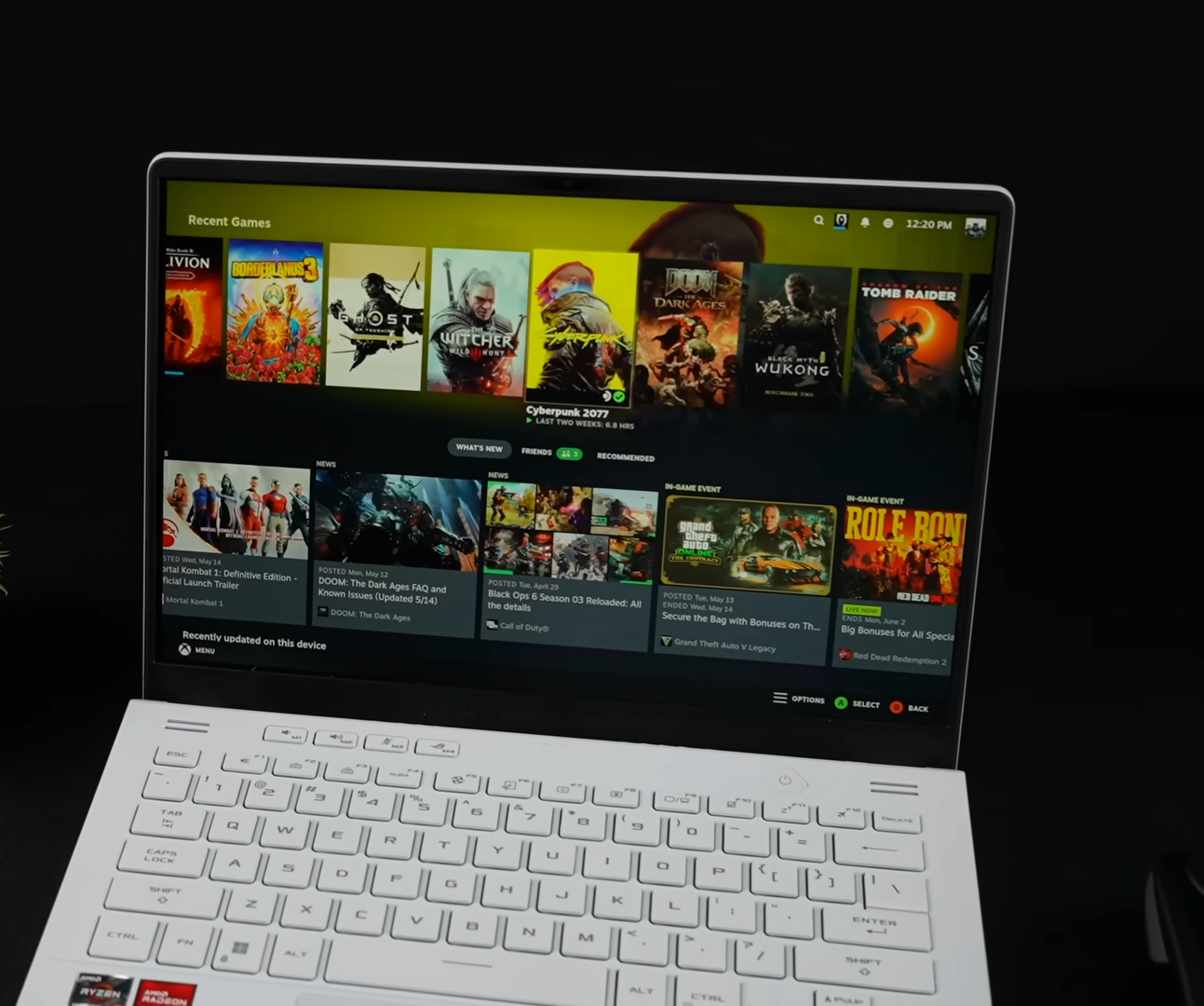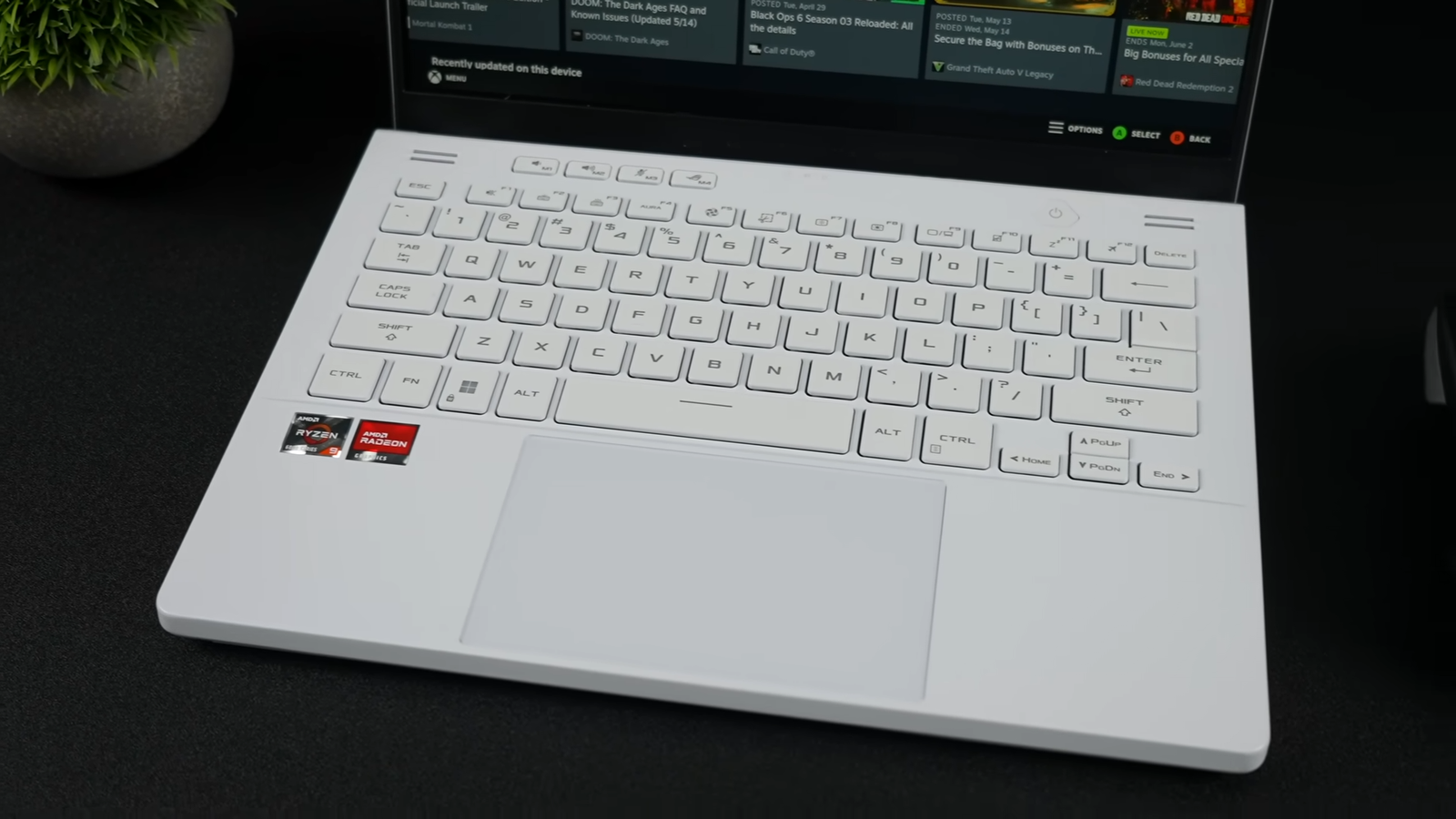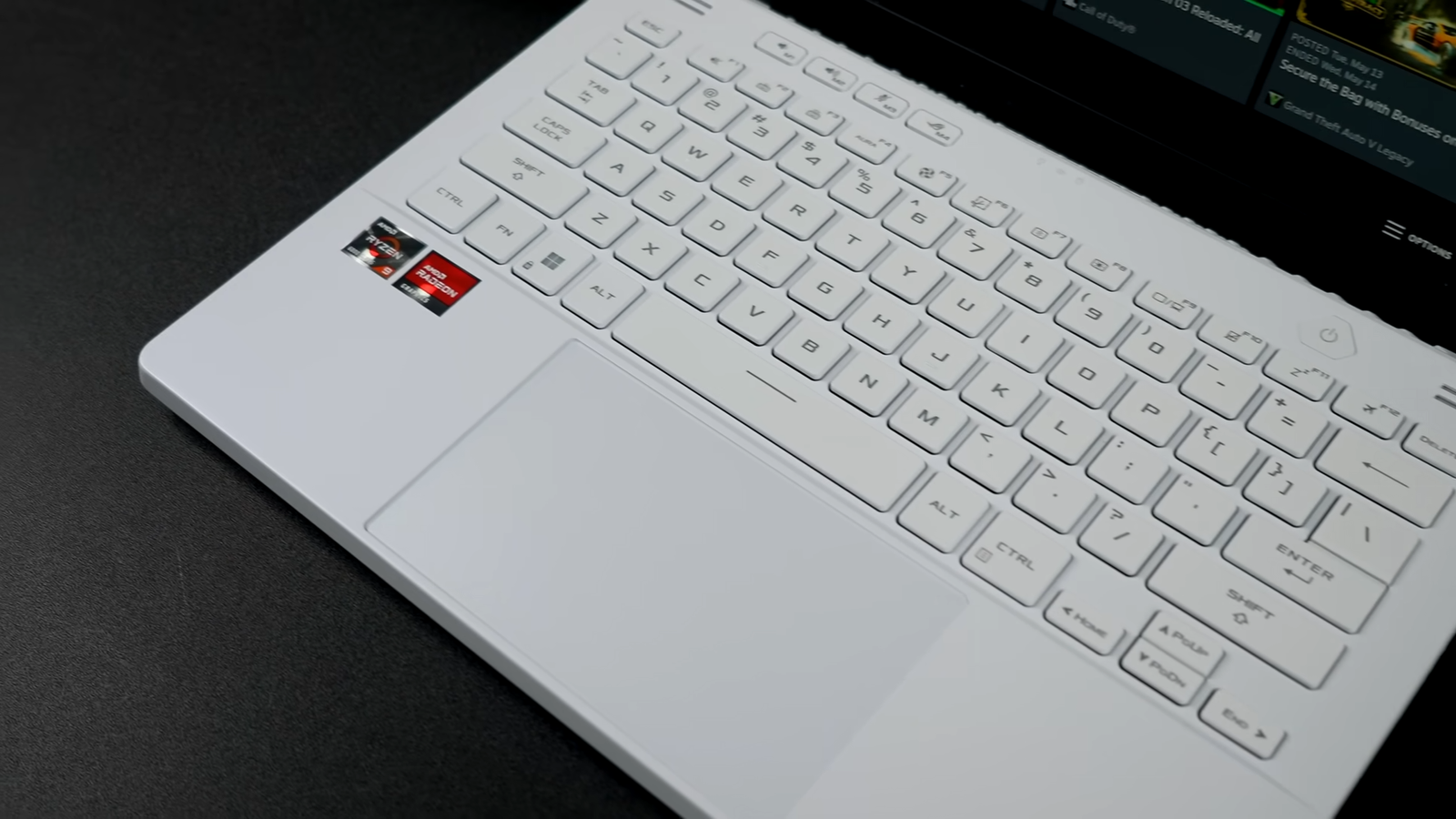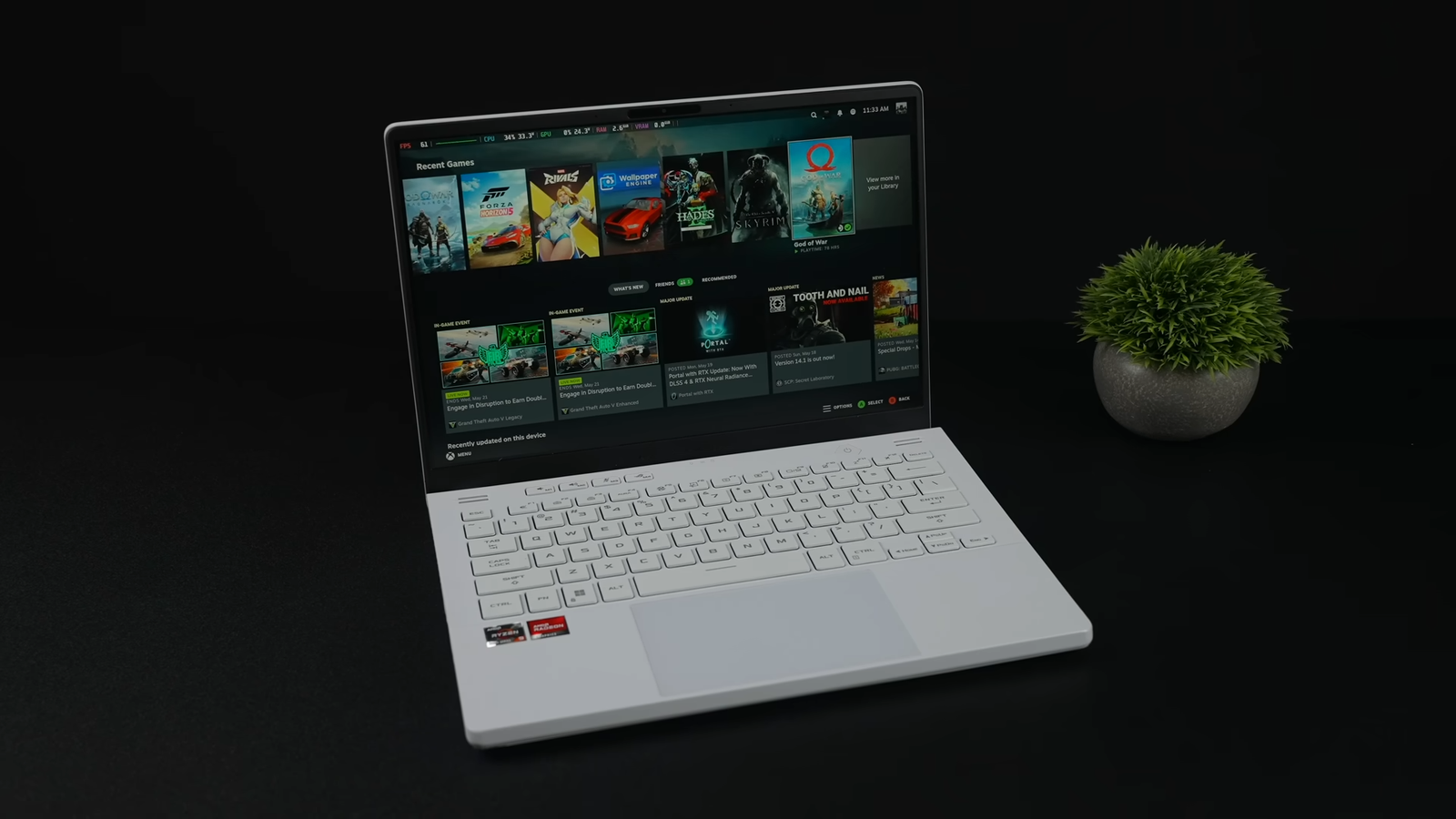SteamOS, the Linux-based operating system at the heart of the Steam Deck, has been a topic of growing interest among PC gamers. While we’ve seen it installed on handhelds, mini PCs, and DIY desktop builds, what about running official SteamOS on a gaming laptop with a dedicated AMD GPU? That’s exactly what I set out to explore by testing SteamOS on an ASUS ROG Zephyrus G14, a laptop that’s been in my household for a couple of years now. This has been my wife’s main gaming machine, but she kindly agreed to let me borrow it for this experiment—though I did promise not to break it.

The Test Machine: ASUS ROG Zephyrus G14 with AMD Power
The ASUS ROG G14 is a compact yet powerful laptop, equipped with an AMD Ryzen 9 6900HS processor—8 cores, 16 threads, boosting up to 5.1 GHz. This chip can handle up to 80 watts, and SteamOS lets us adjust the TDP directly without the need for third-party utilities. The laptop also features 16GB of RAM and an AMD Radeon RX 6700S GPU with 8GB of VRAM. This combination has performed well under Windows, though it tends to get a bit hot, which is expected given the form factor and hardware capabilities.
One challenge with installing official SteamOS on a gaming laptop like this is that AMD gaming laptops aren’t as common, and SteamOS doesn’t play well with Nvidia GPUs due to driver issues. While alternative distros like Bazzite offer some workarounds, Nvidia support on Linux remains messy, which is why this test focuses on AMD.

The Installation Experience and Initial Hiccups
Getting SteamOS up and running on the G14 was surprisingly smooth. I didn’t have to install a specific version like 3.8; instead, I went with SteamOS Hollow 3.624. However, the experience wasn’t without its quirks. For instance, the 16:10 aspect ratio display works fine in SteamOS itself, but when launching games, I could only select 16:9 resolutions. Even forcing an override in the game settings or within SteamOS didn’t fix this, which seems to be a driver issue or a limitation within the OS.
Another minor annoyance is that RGB control for the keyboard isn’t available in SteamOS, at least not without tinkering with third-party plugins. For this test, I was willing to live without RGB lighting—it’s a minor cosmetic feature, after all—but it’s something to note for those who care about aesthetic customization.

Performance Breakdown: SteamOS on the G14
With the G14 running SteamOS, I wanted to see how well it could handle popular titles at 1440p. Here’s a breakdown of the gaming performance:
Cyberpunk 2077
At 1440p, high settings with FSR set to Quality, the game ran decently. However, the 6700S didn’t deliver a major performance jump compared to the 6600M I’ve previously tested on SteamOS. It seems like the higher clock speeds of the 6700S aren’t fully utilized here, which could be a limitation of SteamOS or the GPU driver.
Borderlands 3
Running at 1440p, high settings, I averaged over 70 FPS, though occasional hiccups cropped up. This isn’t unique to SteamOS—similar stutters have been seen in Windows as well, particularly on AMD GPUs. Borderlands 3 is generally well-optimized for AMD hardware, and it runs well on this setup, especially when using FSR at Balanced settings.
The Witcher 3
At 1440p, high settings, without FSR, the game averaged around 72 FPS. I expected higher frame rates given the GPU, but the performance gap between Linux and Windows remains. That said, the game is fully playable and looks great.
Spider-Man Remastered
This title has been a bit finicky. Running it at 1440p, high settings with FSR on Balanced, the game looked good, but performance could be better. The developers have released updates to address performance issues on lower-end GPUs, but it’s still not quite perfect, and it would be nice to disable FSR entirely.
Doom Eternal
Here’s where the G14 really shines. Doom Eternal at 1440p, ultra nightmare settings, 100% resolution scale, delivered over 100 FPS on average. I tried unlocking the frame rate completely, but the system seemed capped at 120 FPS, even with V-Sync off. Still, it’s a smooth, fluid experience.
Doom: The Dark Ages
Unfortunately, this game wasn’t playable. As soon as I loaded into gameplay, the screen turned completely black. I tried different Proton versions, resolutions, and settings, but no luck. The issue was noticeable even from the main menu, where the Doom Slayer character model was missing. So, for now, Doom: The Dark Ages is off the table for SteamOS on the G14.
Oblivion Remastered
At 1440p, medium settings with FSR on Balanced, the game struggled to maintain 60 FPS, dipping below that mark. Even dropping down to 1080p was necessary for smoother performance. This title seems to have some inherent issues on Linux and even on Windows, so it’s not a reflection solely of the hardware or SteamOS.

Final Thoughts: SteamOS on the G14—Impressive, but with Some Quirks
Overall, the performance of SteamOS on the ASUS ROG G14 has been impressive. The Ryzen 9 6900HS and Radeon RX 6700S combo holds up well for modern gaming, especially at 1080p and 1440p. Most titles ran smoothly, though not always at the highest frame rates I’d hoped for, and the inability to fully utilize the 16:10 display is a bit frustrating. RGB keyboard lighting is also a no-go for now, and some games—like Doom: The Dark Ages—are simply unplayable due to bugs.
That said, as a proof of concept, running official SteamOS on a gaming laptop is absolutely feasible, and it’s exciting to see how well it performs. If you’re an AMD laptop owner looking for a console-like gaming experience with the flexibility of a PC, SteamOS is worth exploring. Just be prepared for a few quirks along the way.
If you’re considering trying this out for yourself, keep in mind that Linux gaming is still evolving. While performance on SteamOS is solid, there’s room for improvement, and certain hardware limitations—like display support and GPU clocking—may affect your experience. But for the most part, gaming on a laptop with SteamOS is a viable and increasingly compelling option.
Unlock the World of Gadgets!
Subscribe to Gadget Explorer Pro for:
- The latest tech reviews & recommendations
- Exclusive deals & insider updates
Join us now and explore like a pro!
